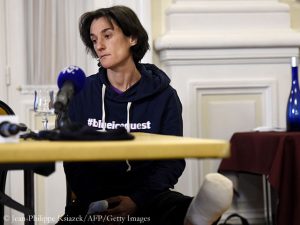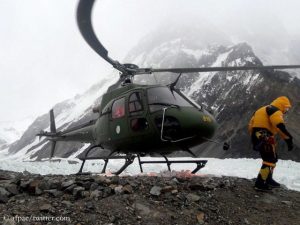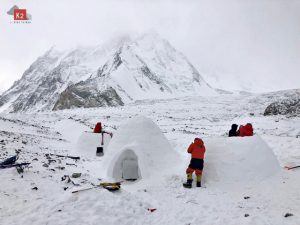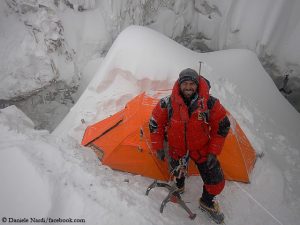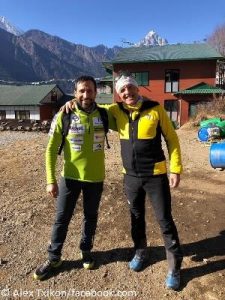Nanga Parbat: Revol’s anger after the rescue
“We could have saved Tomek.” With this sentence, the French mountaineer Elisabeth Revol has triggered a debate. Could her Polish rope partner Tomek Mackiewicz still be alive, whom, suffering from severe high altitude sickness and slowblindness after their summit success on Nanga Parbat, she had had to leave at 7,200 meters, if the rescue at the end of January had started faster? On the late evening of 25 January, Revol had made several emergency calls. “It’s a race against the clock when you set off a rescue,” Elisabeth said at a press conference in Chamonix on Wednesday. “It took, in fact, 48 hours for something to happen. So clearly I have a lot of anger inside of me – and Tomek could have been saved if it had been a real rescue carried out in time and organized.”
Price forced up
The anger of the 37-year-old is expressively directed neither against the climbers of the Polish K2 winter expedition, who had ascended in high speed and brought her back to safety, nor against the helicopter pilots, but against the Pakistani organizers of the rescue operation. Ludovic Giambiasi, a friend of Revol, had tried from France to launch the search for the two climbers in distress. He spoke of “delays and problems”. So the price was forced up from $ 15,000 to $ 40,000, “cash, on the table”, said Ludovic. According to their own information, the government of Gilgit-Baltistan province has set up a commission to investigate the allegations.
Climbers in difficulties have to descend
Compared to Nepal, where helicopter rescue from the highest mountains is privately organized and now works with Western support quite professionally, Pakistan still lags behind. The Pakistani military has been strictly controlling the air traffic in the Northern Areas due to the tensions with India lasting for decades. Rescue Operations are conducted by Askari Aviation, a subsidiary of the Army Welfare Trust. The helicopters are provided by the army and flown by former air force pilots. For a rescue on the long rope from heights above 7,000 meters, as it is now practiced almost routinely on Mount Everest, the gutted special helicopters, used in Nepal, are missing as well as the staff specializing in this dangerous way of rescue. In 2005, a Pakistani helicopter team succeeded in bringing the Slovenian top climber Tomaz Humar on the rope from 6,000 meters in the Rupal Face of Nanga Parbat down to safety. However, such operations are not routine in Pakistan. Expeditions, whose members have been running in great difficulties, are explicitly required by Askari Aviaton to make an effort to bring the climbers down to a safe height for helicopter landing below 5,500 meter.



